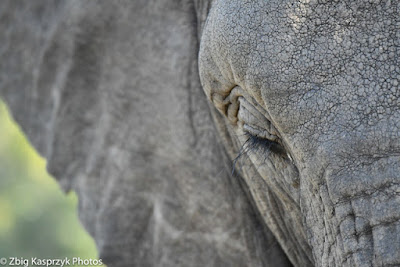 |
Girl With a Blue Surgical Mask
|
Masks are becoming the new norm when we see faces out in public, on TV, or even in advertisements. We will forever recognize 2020 as the year of the mask because of COVID-19. In this post, I want to talk about face coverings throughout history and their use ceremonially in various cultures, as disguises, and for characters from movies and in commercial advertisements. Often the eyes are the only feature necessary for identifying a person, which is why I suppose that some masks that cover the eyes are better at concealing a person's identity.
Examples include Zorro, the Lone Ranger (Clayton Moore or Armie Hammer), Jet Li as Kato in the Green Hornet, The Dread Pirate Roberts (Cary Elwes, a.k.a. Westley) from The Princess Bride, Chia-Hui Liu as Johnny Mo (bald-headed general of the Crazy 88 with Kato mask) from Kill Bill: Vol. 1, McDonald’s the Hamburglar and various superheroes. You may also see such eye masks at a masquerade ball, a carnival, or in some old paintings of harlequins.
 |
Ryan Reynolds as Deadpool
|
Often, creepy full-face coverings conceal disfigurements, such as The Phantom of the Opera, the Elephant Man (veil), Star Wars' Darth Vader, Ryan Reynolds' campy character in Deadpool, and House of Wax with Vincent Price as the disfigured sculptor who resorts to using real people for his wax figures.
 |
Loki mask from The Mask
|
Memorable mask movies include 1929’s Iron Mask, 1939’s Man in the Iron Mask, The Texas Chainsaw Massacre, Nick Castle in the Halloween series as Michael Myers, Jason’s Friday the Thirteenth hockey mask, Predator’s mask, the 4 ex-Presidents in Point Break, Jim Carrey's (Loki) Mask, Scream's Ghostface mask, Hannibal (Lecter's) leather mask, Hugo Weaving in V for Vendetta, and Tony Stark's (Robert Downey Jr.) Ironman.
Even before the pandemic, The Masked Singer became one of the most popular shows on prime-time TV. Each persona was entirely concealed by not only a large headpiece (not a mask) but an elaborate costume (like Ironman). Even the speaking voice was altered until you heard the celebrity actually sing.
Today, masks are used for occupational purposes to protect a welder's eyes and to guard against breathing dangerous gases or sharing harmful germs. They are also used on Lay's potato chip bags, and in the commercial for anti-depression drug Rexulti with the paper smiley face on a stick as a prop.
 |
The Lovers (1928), Magritte
|
It is somewhat difficult to find works of art that show people wearing masks. Surrealist Belgian artist, René Magritte is famous for covering faces. You've all seen The Son of Man (1946) in which he covers the suited man's face with a Granny Smith apple. It was used in the 1999 remake of The Thomas Crown Affair starring Pierce Brosnan.
In an earlier painting, he covers the entire heads of a couple in The Lovers.
 |
| Thalia and Melpomene |
One of the oldest and most recognizable masks are the pair of symbolic comedy and tragedy faces used in the golden age (500-300 BC) of ancient Greek drama to represent theater arts.
The
history of masks is a very interesting subject. Apparently, masks were used in rituals and ceremonies to communicate with ancestral spirits, scare off enemies, and cover the faces of the dead. Such ceremonies often included performances to promote successful hunting and harvesting, as well as in medical practices to drive away evil spirits from the sick. Mexicans celebrate the
Day of the Dead (Dia de Los Muertos) from 31 October - 2 November and honor the dead by painting their faces and wearing colorful masks resembling skulls.
 |
| Venetian Carnival Masks |
As far back as the 13th century, masks were used to celebrate Carnival in Venice. They are still used today in a big way in Rio de Janeiro, Brazil for their Carnival. The Chinese conduct week-long celebrations of the New Year by wearing masks representing their deities, spirits, and fabled animals associated with the particular year (e.g. 2020 is the Year of the Rat). In parts of Austria, the darker side of Christmas is celebrated in early December at the Krampusnacht Festival. Participants wear masks representing a mythical horned demonic creature, Krampus, who, unlike the benevolent and kind St. Nicholas, wishes to punish misbehaving children.

When my daughter was in Jr. High School one of her teachers (maybe of World Cultures) assigned each student to create their own version of an African mask. This was one of my all-time favorite school projects in which I was encouraged to participate as a parent helper/advisor. Today I marvel when 4th-graders at the school where I volunteer display their fantastic masks made of paper. This mask was made by a 5th-grader with a substitute teacher, Jennifer Boudreau, and was posted on the teacher's
Mena Woods' blog.
I especially appreciate this mask's 3D effect using paper cutouts.
Stay tuned for the next Interview With an Artist installment, where I interview a photographer friend.

 I was also inspired by two rather complicated curvy carvings of Medusa and the character Davy Jones (Bill Nighy) in Pirates of the Caribbean: Dead Man's Chest. Uma Thurman played the part of snake-haired Medusa in 2010's Percy Jackson & the Olympians: The Lightning Thief.
I was also inspired by two rather complicated curvy carvings of Medusa and the character Davy Jones (Bill Nighy) in Pirates of the Caribbean: Dead Man's Chest. Uma Thurman played the part of snake-haired Medusa in 2010's Percy Jackson & the Olympians: The Lightning Thief.





















































